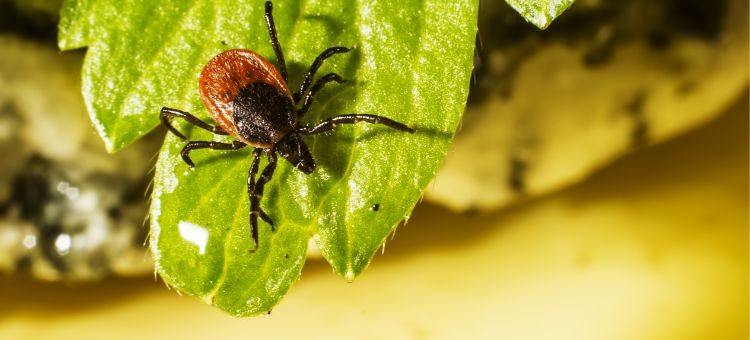
Everything you need to know about Ticks
- Posted by gordonb
- On June 7, 2022
- 0 Comments
This may be difficult to read, because just doing basic research on ticks will prompt even the most level-headed human to start checking their skin for signs of them. But tick bites are estimated to have affected between 50,000 and 300,000 people a year according to the CDC and they can transmit a shocking number of diseases and parasites. So as uncomfortable as it may feel, for the health of your family and yourself, let’s do a quick breakdown on what you need to know about ticks to protect all those that you love.
What are ticks?
Ticks are small freckle-sized brown or black blood-sucking relatives of spiders. They have eight legs and tend to have flat oval shaped bodies that grow rounder as they get more engorged with the blood of their host. They will feed on almost any kind of creature, including reptiles, depending on the time of year and stage of their lifecycle. This is why the variety of diseases and parasites that they host is vast and can be permanently impactful.
How do they find us?
Ticks can hitch a ride on our clothing, our bags, our tools, nearby foliage, our pets, and anything else that is growing or alive. They are found in almost every part of the country but are most prevalent in the northeastern and midwestern parts of the United States. But don’t think that makes them any less common here in the Triad of North Carolina. With our larger populations of deer, opossums, and rodents nearby, ticks are likely in your backyard, flower beds, and grass.
What diseases do they carry?
For a long time, the medical community was baffled by the effects of Lyme disease and some doctors considered it to be a symptom of mental illness as opposed to a legitimate medical condition. Now that we know the truth, Lyme disease and many other tick-born diseases and parasites are among the leading causes of nerve conditions, seizures, mental confusion, joint pain, flu symptoms, rashes, anaphylaxis, heart issues, memory loss, fevers, and even life-threatening swelling of the small blood vessels. The variety of diseases that cause these symptoms include but are not limited to tularemia, Rocky Mountain spotted fever, Babesiosis, Powassan virus, red meat allergy, and Anaplasmosis.
How do we protect ourselves?
If you know that you are going into a wooded area, or will be spending a lot of time outdoors, there are a few things that you can do to decrease the chances that a tick will get access to you.
- Wear fully covered and light colored clothing. The longer the sleeves, the harder it is to get a tick attached to you if you simply brush up against a leaf upon your travels. But with light colored clothes, if you do happen to catch a hitchhiking tick, they’re easier to see before they reach your skin.
- Tuck your pants into your socks and wear a hat. Ticks are resourceful and will find any exposed skin that they can. Many people don’t even realize that they were bitten because the tick is on the top of their head and hidden by their hair, or snuck in the space between the bottom of your pants and the top of your socks.
- Spray with tick repellent. Many people take the time to buy mosquito repellent before going on a hike or exploring the woods, but they don’t even consider tick repellent. It’s cheap, easy to find, and ticks think it’s disgusting and will disengage immediately.
- Watch where you walk. Do your best to stay in the center of any path you’re on when foraging through a wooded area. Sure it’s not as much fun, but you won’t bring home any unwanted travelers.
- Tick checks. Once you return home, do a thorough tick check and shower before returning to regular activities. The risk of disease increases with the amount of time a tick is attached. They like to find crevices, so check your armpits, on the top of your head, behind your ears, behind your knees, inside your bellybutton, and all private areas. Be sure to not just look, but also touch. Some of the worst carriers of disease are also the smallest of ticks.
Perhaps the most important thing you can do if you have a yard with plants and trees is to contact a specialist, like Critter Control of the Triad, to spray for ticks. They can cover your yard with a protective coat that will kill existing ticks and prevent new ones from wanting to come hang out. Call them at 336.370.0445.











